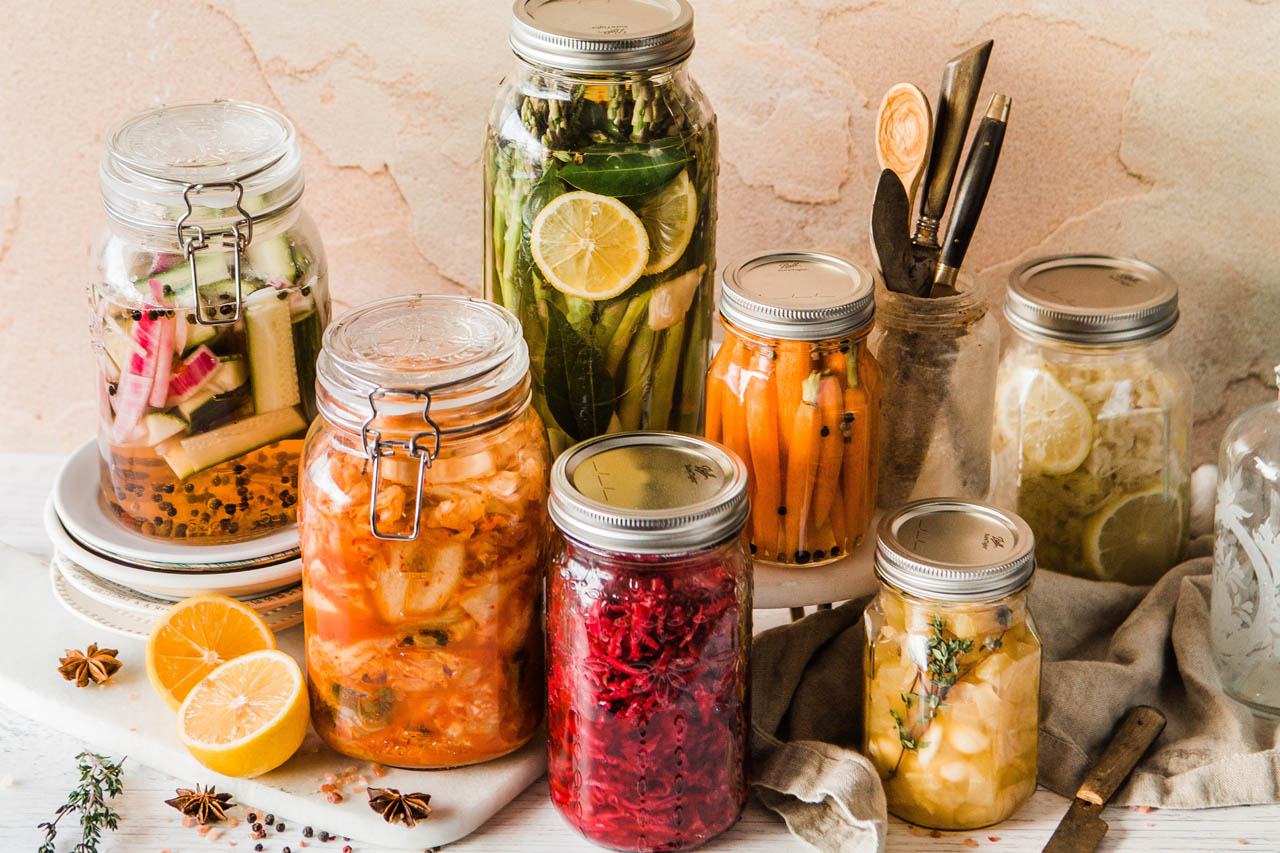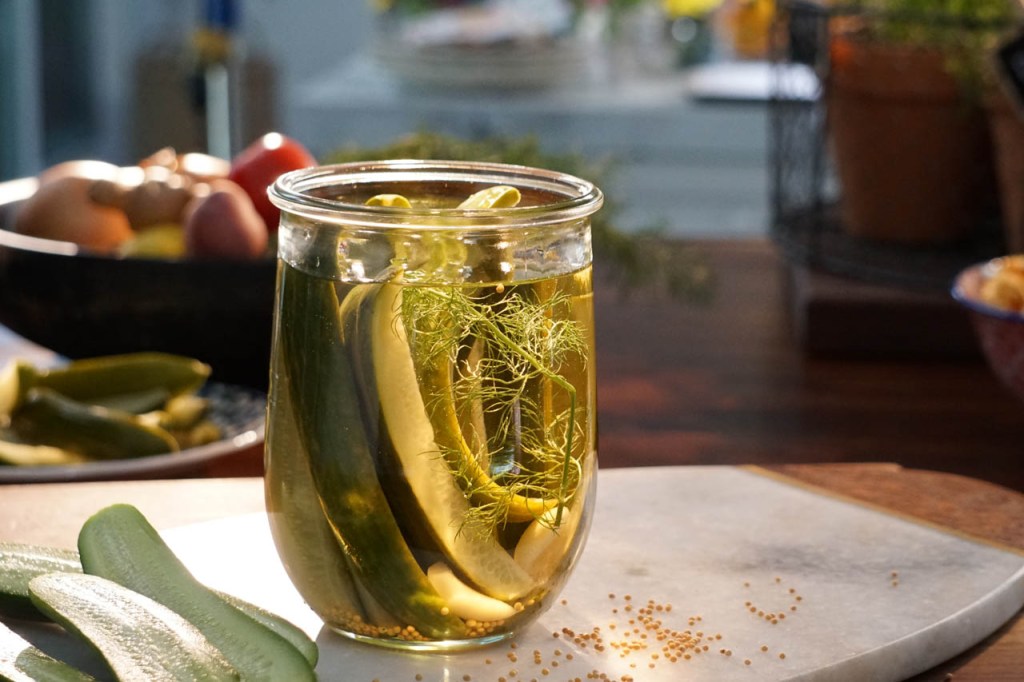
Whether you’re looking to add a pop of bright flavour to your meals or you want to preserve an excess supply of veggies before they go bad, pickles are a deliciously tangy and convenient solution. Pickling at home is easier than you might think and doesn’t necessarily require complicated canning techniques. Better still, you can easily tweak your pickles to suit your tastes and the ingredients you have on hand. Here’s everything you need to know to get started with quick pickling.
What is a quick pickle?
Quick pickles, which are also known as refrigerator pickles, offer the acidity and crunch of traditional pickles but require significantly less effort, time and know-how to make.
Water-bath canning uses a strong brine and involves boiling jars containing your ingredients in water to vacuum-seal the container. Quick pickling, by contrast, simply involves covering fresh veggies in brine and refrigerating them in a process akin to marinating.
Can I pickle regular cucumbers?
Quick pickling can be done with just about any type of vegetable that you think could benefit from a boost of vinegary flavour, including all kinds of cucumbers. It’s best to use fresh veggies when possible for optimal taste and texture. You can pickle one type of veggie at a time or add multiple different types into your jars for variety.

What are the basic ingredients in pickling?
Quick pickling uses a simple brine made with equal parts water and vinegar, along with salt and sugar. White, apple cider, rice and white wine vinegars all work well and you can even experiment with mixing two different types to achieve the flavour balance you want.
A good rule of thumb is to add about 1 tablespoon of salt and 1 tablespoon of sugar for every cup of water and vinegar mixture. As with your vinegar choice, part of the fun of pickling is that you can freely play around with the basic ingredients and ratios. Try adding more salt for extra savoury pickles or increase the sugar if you prefer your pickles on the sweeter side.
Lastly, you can add in spices and herbs to kick up the flavour of your pickles. Black peppercorns and mustard seeds are a reliable combo or you can add chili pepper flakes for a hint of spice. Slices of fresh ginger or whole coriander, clove or star anise can bring warm, earthy notes.
Related: A Definitive Guide to Vinegar
How to make quick pickles step-by-step
- Set out two clean, wide-mouth pint jars or other tempered glass jars with lids.
- Add your brine ingredients to a small pot and warm over high heat, stirring to dissolve the salt and sugar. Bring the brine to a boil, then turn off the heat.
- Meanwhile, prepare your veggies. You can cut them into any shape you want, but thin spears or slices are a good bet for most veggies.
- Pack your veggies into your jars, leaving about a ½-inch of space between the rim of the jars and the tops of your veggies.
- Pour the hot brine into the jars until the veggies are submerged. Screw on the lids.
- Let the jars cool on your counter for about 1 hour before placing them in the fridge. For the best flavour, refrigerate the veggies for at least 24 hours before digging in.
How long do homemade pickles last?
Quick pickles don’t have the same lengthy shelf life as traditional pickles, so you’ll want to eat them within about a month. Enjoy them as a snack straight out of the jar or keep them on hand to jazz up salads, sandwiches and grain bowls.
Read more: Easy Creamy Dill Pickle Potato Salad
